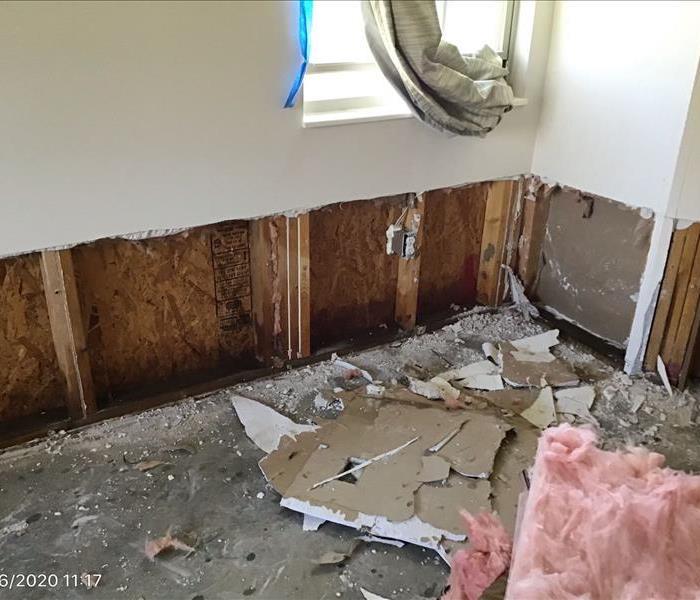Assessing Structural Damage After a Severe Storm: A Step-by-Step Guide
9/20/2023 (Permalink)
 Keep an eye out for any water leaks or signs of water damage, such as damp or stained walls and ceilings.
Keep an eye out for any water leaks or signs of water damage, such as damp or stained walls and ceilings.
Severe storms, such as hurricanes, tornadoes, and thunderstorms, can cause significant structural damage to homes and buildings. Strong winds, heavy rainfall, and hail can all contribute to the destruction of roofs, walls, and foundations. Assessing structural damage after a severe storm is essential to ensure the safety of occupants and prevent further damage. In this blog post, we will explore the importance of assessing structural damage and provide a step-by-step guide on how to assess damage after a severe storm.
The Importance of Assessing Structural Damage
Assessing structural damage after a severe storm is critical to ensure the safety of those residing in the affected property. If there is significant damage to the roof, walls, or foundation, it can compromise the integrity of the entire structure, putting occupants at risk. Assessing the damage will also provide an estimate of the repair costs and help determine if it is safe to continue inhabiting the affected property.
Step-by-Step Guide to Assessing Structural Damage
Step 1: Safety First
Before assessing any damage, ensure everyone's safety by first checking if there are any imminent hazards. Look out for any live wires or gas leaks, and evacuate the affected area if necessary. If you suspect structural damage to the building's integrity, do not enter the premises until it has been cleared as safe by a licensed building inspector.
Step 2: Examine the Roof
The roof is one of the most vulnerable areas during a severe storm. Carefully examine the roof for any signs of damage, such as missing shingles, dents, or cracks. If you notice any damage, it is advisable to get a trained roofing professional to inspect the roof for a more in-depth assessment.
Step 3: Check the Exterior
Inspect the exterior of the building for any signs of structural damage. Look for cracks in the walls, foundation, or chimney, which can indicate structural damage. Check for any areas where the siding has loosened or any openings, such as broken windows or doors.
Step 4: Survey the Interior
After assessing the exterior, it is crucial to inspect the interior of the building for damage. Keep an eye out for any water leaks or signs of water damage, such as damp or stained walls and ceilings. Check for any damage to structural elements such as beams and columns, including any sagging or warping.
Step 5: Document the Damage
When assessing the damage, it is essential to document everything you collect, either by taking photos or videos. This information should be provided to insurance adjusters and contractors, as it is useful in estimating repair and restoration costs.
Assessing structural damage after a severe storm is essential to ensure the safety of occupants and the longevity of the affected property. By following the step-by-step guide outlined above, homeowners can effectively evaluate the extent of any damage sustained during a storm and take the appropriate steps to restore the property to its preloss condition. Remember to prioritize safety, document the damage, and seek the assistance of professionals where necessary.





 24/7 Emergency Service
24/7 Emergency Service